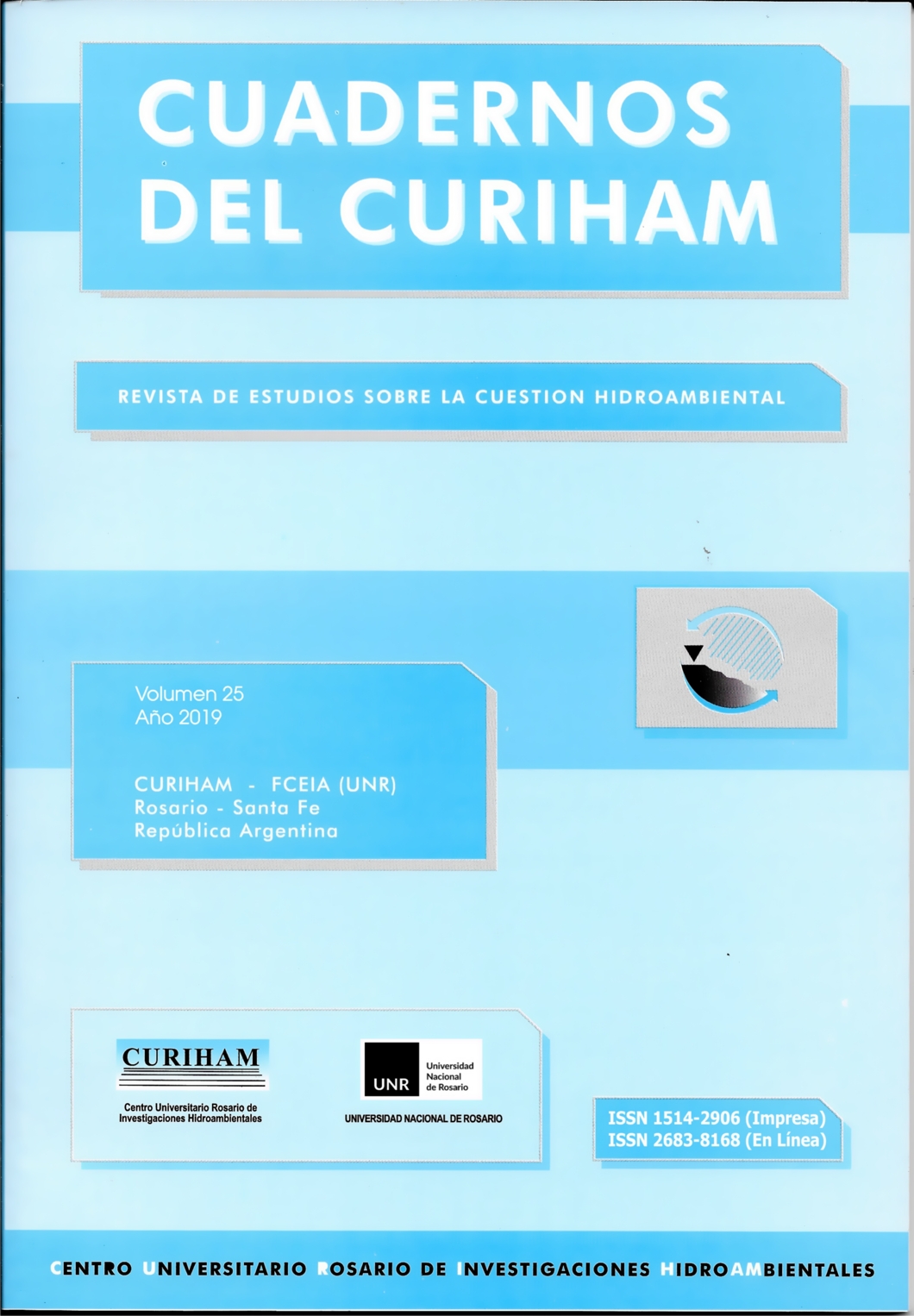Experimental study of hydrological effect of green roofs to be used in the metropolitan area of the so-called Great Resistencia district.
DOI:
https://doi.org/10.35305/curiham.v25i0.121Keywords:
Green roofs, Urban storm drainage, Urban hydrologyAbstract
Preliminary results of a study on a physical modeling referred to hydrologic effectiveness and efficiency are presented herefor use in the Greater Resistencia Metropolitan Area (AMGR), Chaco. Extensive green roofs are systems that are placed on traditional roofs to reduce the effects of waterproofing of urban land in order to laminate runoff hydrograms they generate. They are composed of several layers built with different elements, having different characteristics and properties, the upper layer consisting of an organic substrate, and thin thickness, which allows growth of low size vegetation and for what are known green roofs. Increasing on waterproofing associated to urbanization, the low natural slope of the land and its location in an area of water risk makes it conducive implementing this system in the cities making up Great Resistencia Metropolitan Area, as a mitigation measure that would minimize effects of high intensity rainfall, thus reducing and delaying direct runoff water, helping to avoid (or at least minimize) flooding caused by rainfall. The aim of this work was evaluate qualitatively and quantitatively effects of this type of roofing. To do this, a physical model of the extensive roof was constructed, by using a traditional flat roof as a comparison. Preliminary results obtained showed an important damping and retarding effect of the runoff of this type of roof.
Downloads
References
Britto Correa, C. (2001). Análisis de la viabilidad y comportamiento energético de la cubierta plana ecológica. Tesis Doctoral. Universidad Politécnica de Madrid. Escuela Técnica Superior de Arquitectura de Madrid, España.
Chandías, M. E. y Ramos, J. M. (2009). Introducción a la construcción de edificios. Editorial Alsina. Buenos Aires, República Argentina. 320 pág.
Depettris, C. A. y Pilar, J.V. (2001). Uso de Medidas No Estructurales para controlar el Aumento de las Áreas Impermeables en la Ciudad de Resistencia. In I Seminario de Drenagem Urbano Do MERCOSUR - V Seminario Nacional de Drenaje Urbano: Soluções para a Drenagem Urbana em países da América Latina. Porto Alegre, RS, Brasil.
Legislatura de la Ciudad Autónoma de Buenos Aires. (2012). Ley 4428. Disponible en http://www2.cedom.gob.ar/es/legislacion/normas/leyes/ley4428.html.
Machado, M., Brito, C. yNeila, J. (2000). La cubierta ecológica como material de construcción.Informes de la Construcción. 52(467), 15-29.
Pilar, C.A., Cáceres, M. yBoscarino, L. (2009). Estudio de las condicionantes tecnológicas, económicas y culturales para el diseño de techos verdes. In: Comunicaciones Científicas y Tecnológicas Anuales 2009. FAU UNNE. Página 47 a 50. Corrientes. ISSN 1666-4035.
Scornik, C. (1998). Diagnóstico urbano expeditivo del A.M.G.R. SUPCE, Chaco. Informe de consultoría.
Published
How to Cite
Issue
Section
License

This work is licensed under a Creative Commons Attribution-NonCommercial-ShareAlike 4.0 International License.



























